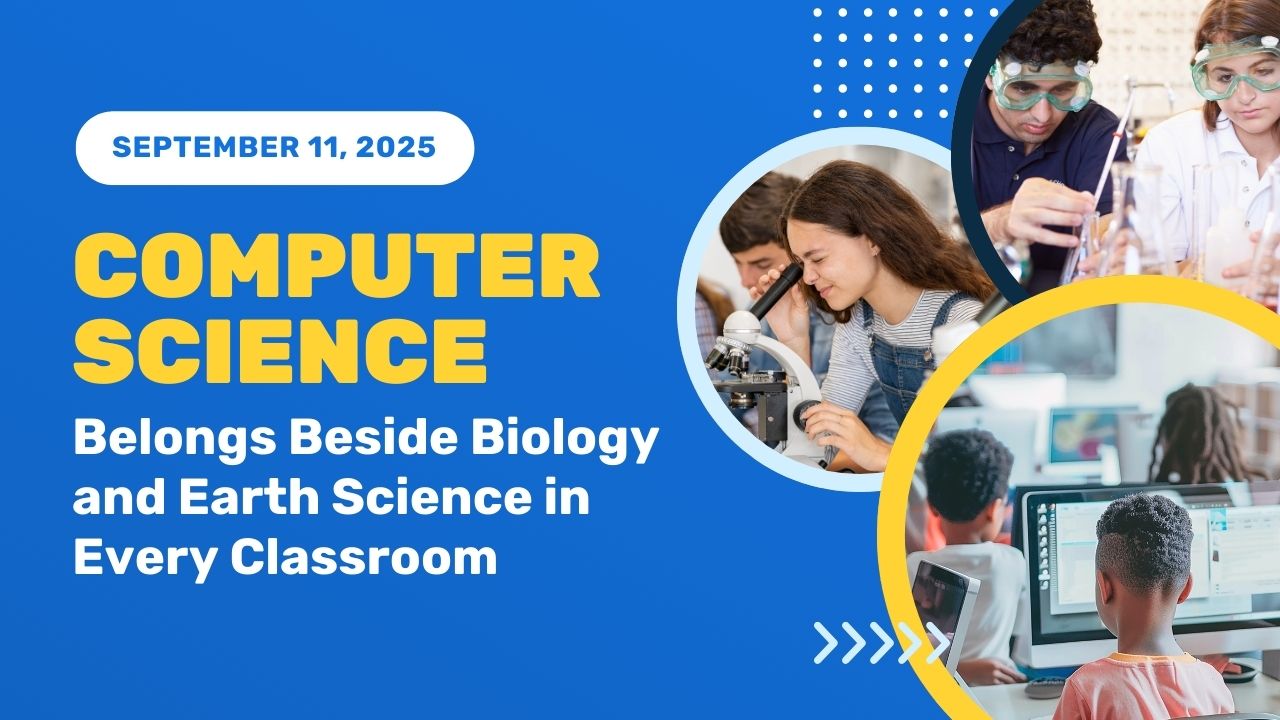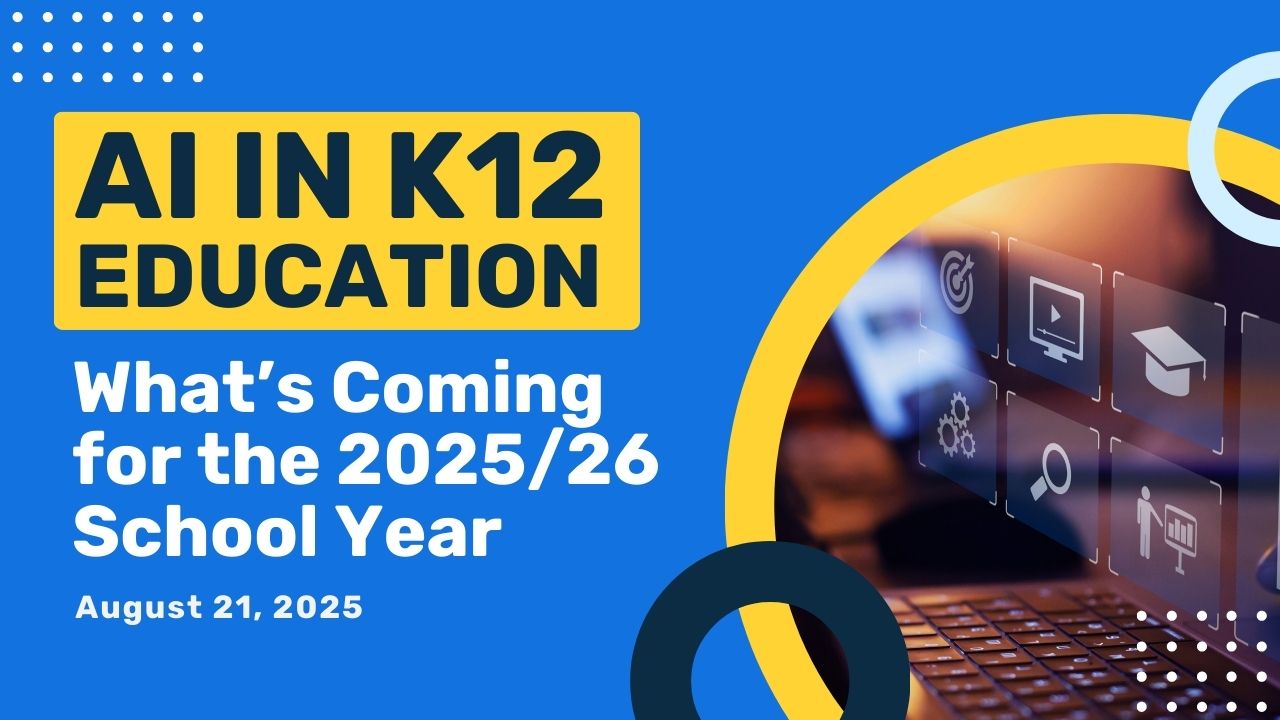I love aphorisms! They inspire me, they teach me, and they guide me. But also, sometimes they entirely contradict one another and cause me to wonder what the right path forward is.
When it comes to the conversation around AI in education and how we ought to move forward, conflicting tidbits of time-tested wisdom seem to be crashing into one another.
“Move fast and break things.” vs. “Look before you leap.”
“Fortune favors the bold.” vs. “Better safe than sorry.”
“You miss 100% of the shots you don’t take.” vs. “An ounce of prevention is worth a pound of cure.”
And on and on…
Here’s what we know: AI in schools is no longer a far-off idea; it’s happening now and it’s happening quickly. Some of the directions where we are headed are clear: more personalized learning, enhanced tech tools for teachers, more efficient schools, and a growing awareness of how to use AI ethically and responsibly.
On the other hand, there are concerns (such as are we on a road to a dystopian nightmare with our foot pressed firmly on the gas pedal with a “Ready. Fire. AIM!” mentality?). Having said that, if we look at the trends, it’s clear we’re aggressively moving towards a world where AI is a partner to both educators and students.
Is that a good thing or a bad thing? A trite reply is “only time will tell” but my guess is that, like other generational technological advances, it will bring a mixed bag of both things we want and things we wish were never born. Such seems to be the nature of human progress.
At Mastery Coding, we’ve spent years building K12 curriculum, game design curriculum, and education programs that not only prepare students for the future workforce but also give teachers the tools they need to succeed. As AI in K12 continues to evolve, we see a clear trend emerging and the momentum is unmistakable: AI is on its way to becoming an significant part of the modern classroom.
Of course soothsaying is not my strong suit but here is a best guess as we begin the back-to-school 2025/26 school year what’s coming next and how schools can harness it.

1. Personalized Learning
One of the most promising aspects of AI in education is its ability to create learning experiences tailored to each student. What we’re about to see more of is:
- Adaptive Learning Platforms: Instead of a one-size-fits-all approach, AI can dynamically adjust difficulty and content. In coding for high school, that might mean providing advanced programming challenges to one student while giving another additional practice in foundational logic. In game design curriculum, AI could suggest design challenges that match each student’s current skill set.
- Personalized Feedback: Students shouldn’t have to wait days to find out if they’re on the right track. AI-powered tools can give immediate, targeted feedback in areas like debugging code, improving project documentation, or optimizing a game design. This real-time insight encourages growth and independent problem-solving.
- Curriculum Customization: With AI, teachers can adapt our K12 coding curriculum to better reflect student interests and demographics. A class fascinated by esports could explore game physics and AI player behaviors; a group into environmental science could use coding projects to simulate climate data.
- Special Needs Support: AI tools like text-to-speech, visual recognition, and adaptive interfaces can make computer science for high school and middle school more inclusive. This ensures students with learning differences can participate fully in coding, AI, and game design projects.
2. Teacher Support
At its best, AI isn’t about replacing teachers; it’s about giving them more bandwidth to do what humans do best. AI is certainly going to help lots of educators in a the following ways this school year:
- Administrative Tasks: Grading programming assignments, tracking progress across multiple projects, or entering data can eat up valuable hours. AI can automate these processes, allowing teachers to focus on mentorship, creativity, and individualized guidance.
- Lesson Development: Teachers can use AI to recommend lesson structures, provide resource links, and design interactive activities. It can even create cross-walks for game design curriculum to align with specific state standards or student interests.
- Professional Development AI can serve as a personal PD coach helping teachers integrate educational tools, refine their instruction, or experiment with new project-based learning strategies. Instead of generic workshops, training can be customized to the teacher’s exact needs.

3. Smart Classrooms and Buildings
AI is also revolutionizing physical learning environments in exciting ways:
- Automated Climate and Lighting Control: AI can adjust lighting for optimal focus during different class periods, cool down classrooms on hot days, or play ambient music to make the learning environment more comfortable for students and teachers.
- Enhanced Security Systems: “Smart” monitoring is well on its way to becoming a reality across the K12 landscape. AI can be used to detect unusual activity, control access points, and respond quickly to security concerns, keeping both people and facilities safe.
- Optimized Resource Management: AI can track usage of computer science hardware, robotics kits, and gaming devices, helping schools plan for replacements, upgrades, and maintenance before problems arise.

The Ethical Considerations and Challenges
For AI in K12 to truly benefit students and teachers, schools must address the ethical side of this innovative technology (something Mastery Coding emphasizes in our AI curriculum.) Much has been written about making sure we try to “measure twice, cut once” but that doesn’t mean the 2025/26 school year will not see many conversations around the following.
- Data Privacy and Security Protecting student information - whether it’s progress data from a coding project or personal details - is critical. AI systems must follow strict protocols to ensure privacy and prevent misuse.
- Bias and Fairness: AI algorithms can unintentionally mirror the biases in their training data. In a computer science curriculum, that might mean certain coding examples skew toward certain cultural norms. Continuous review and diverse representation in datasets are essential.
- Over-Reliance on AI: AI is a powerful tool, but should it replace humans? Whether in middle school computer science or game design curriculum, students still need to develop their critical thinking, collaboration, and creative skill sets in a way that requires personal interactions. Lots of conversation will be had around this as the year progresses.
- Teacher Training, PD and Adoption The most advanced tool won’t help if educators aren’t comfortable using it. Ongoing support is key to integrating AI into K12 curriculum. We will surely see more investment in PD this year but will it be enough?
In the coming year, we’ll likely see AI woven into many parts of the educational system. The decisions we make today—about curriculum design, teacher training, and ethical safeguards—will determine whether AI becomes just another educational trend or a transformative force that truly prepares students for the future.
Will 2025/26 be a “the second mouse gets the cheese” or “he who hesitates is lost” type of school year? As the old adage goes, only time will tell.














